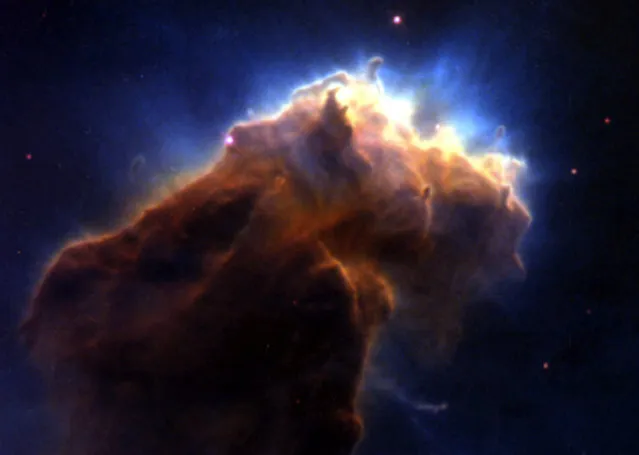
A view of gas pillars in the M16 Eagle Nebula. (Photo by Reuters/NASA)
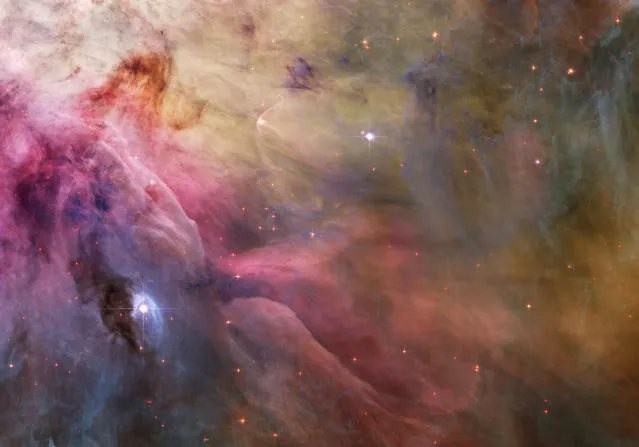
An aesthetic close-up of cosmic clouds and stellar winds featuring LL Orionis, interacting with the Orion Nebula flow. Adrift in Orion's stellar nursery and still in its formative years, variable star LL Orionis produces a wind more energetic than the wind from our own middle-aged Sun. (Photo by Reuters/NASA/ESA/Hubble Heritage Team)
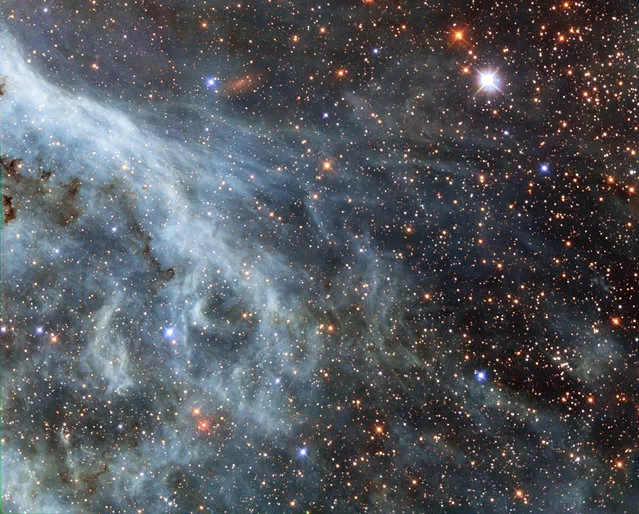
A section of the Tarantula Nebula, located within the Large Magellanic Cloud. The LMC is a small nearby galaxy that orbits our galaxy, the Milky Way, and appears as a blurred blob in our skies. (Photo by Reuters/NASA/ESA/Hubble Heritage Team)
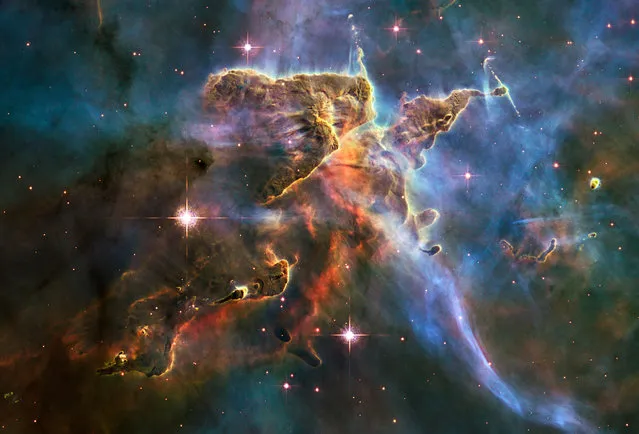
The tempestuous stellar nursery called the Carina Nebula, located 7,500 light-years away from Earth in the southern constellation Carina. (Photo by Reuters/NASA)
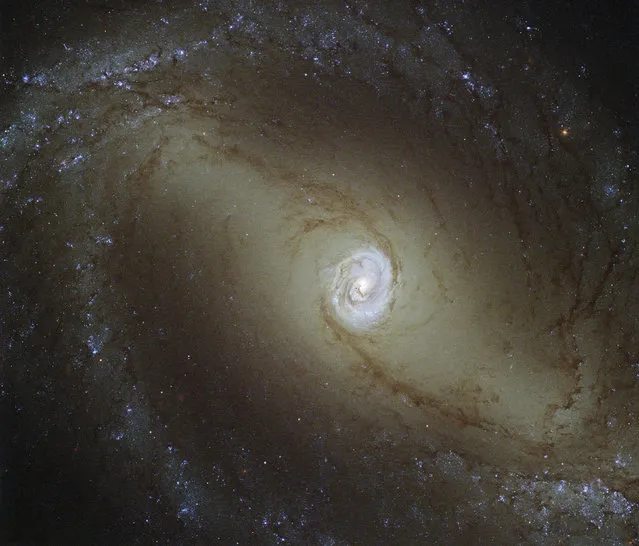
A spiral galaxy known as NGC 1433, about 32 million light-years from Earth. (Photo by Reuters/NASA/ESA/Hubble Heritage Team)
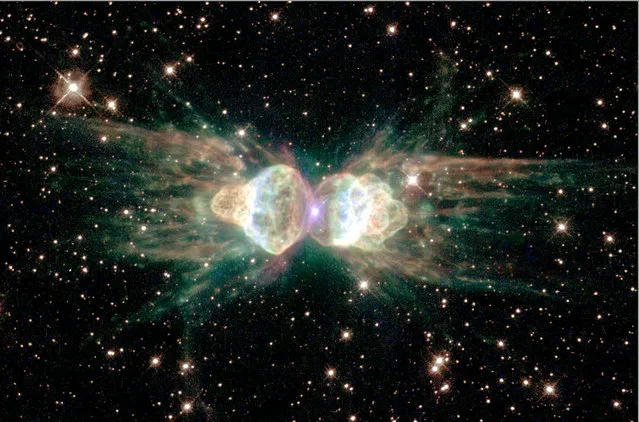
The glowing remains of a dying, sun-like star – of the so-called “ant nebula” – Menzel 3, or Mz3. (Photo by Reuters/NASA)
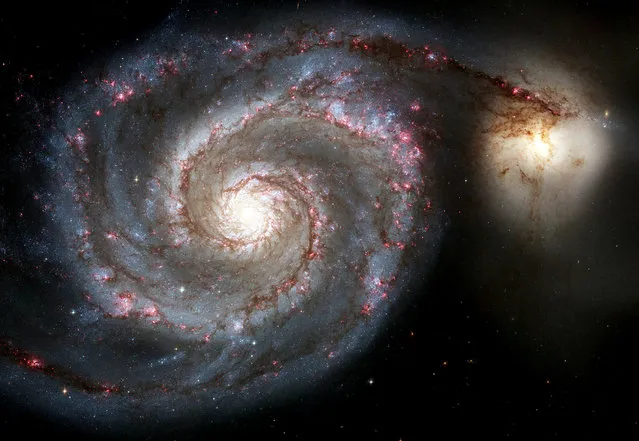
A view of the Whirlpool Galaxy's curving arms where newborn stars reside and its yellowish central core that serves as home for older stars. (Photo by Reuters/NASA)
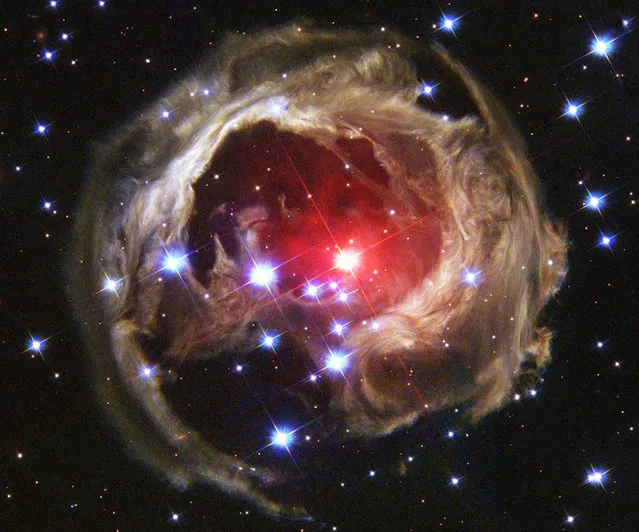
Star V838 Monocerotis's – V838 Mon – light echo, which is about six light years in diameter. (Photo by Reuters/NASA/ESA)
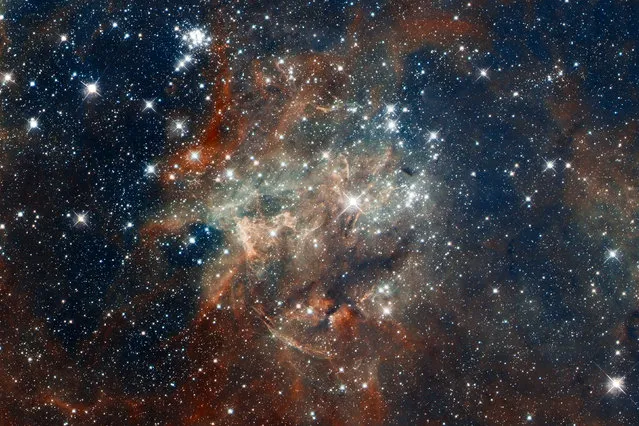
Star cluster NGC 2060, a loose collection of stars in 30 Doradus, located in the heart of the Tarantula Nebula 170,000 light-years away in the Large Magellanic Cloud, a small, satellite galaxy of our Milky Way. (Photo by Reuters/NASA/European Southern Observatory/Space Telescope Science Institute/Hubble Space Telescope)
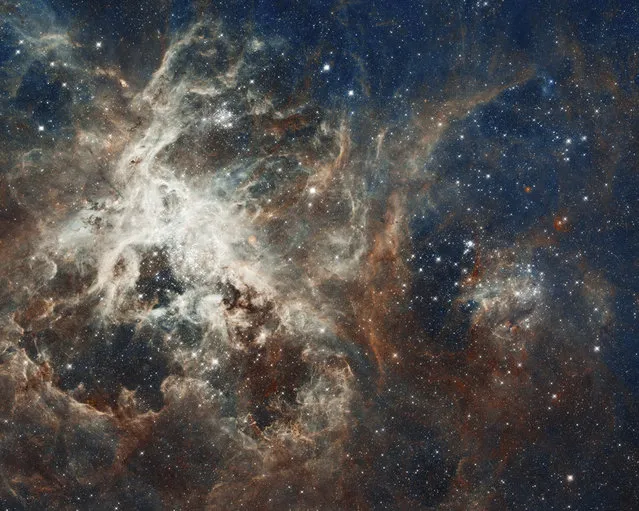
One of the largest mosaics ever assembled from Hubble photos shows several million young stars vying for attention amid a raucous stellar breeding ground in 30 Doradus, a star-forming complex located in the heart of the Tarantula nebula. (Photo by Reuters/NASA/ESA)
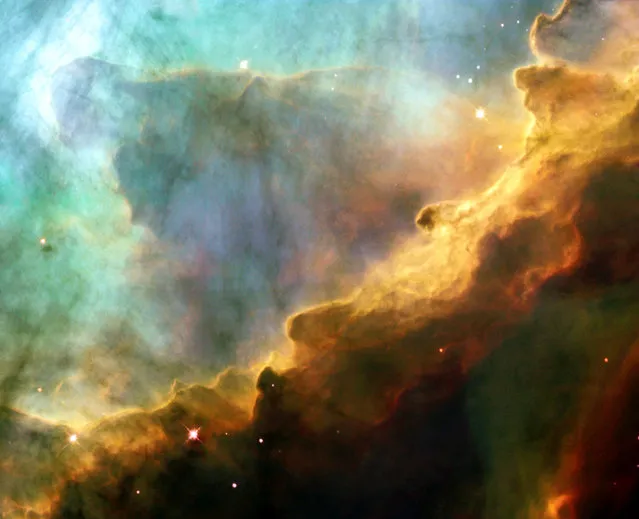
An image of a small region within a hotbed of star formation M17, also known as the Omega or Swan Nebula, located about 5,500 light-years from Earth in the constellation Sagittarius. (Photo by J. Hester/Reuters/NASA/ESA)
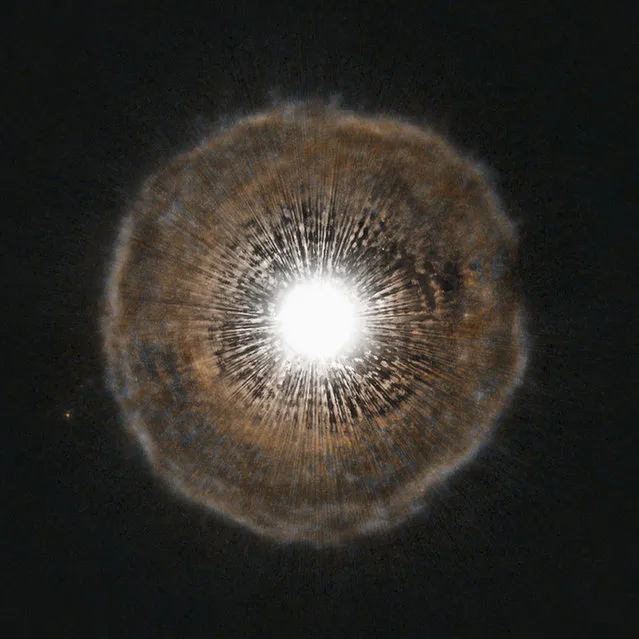
U Camelopardalis, or U Cam for short, a star nearing the end of its life located in the constellation of Camelopardalis, near the North Celestial Pole. (Photo by H. Olofsson/Reuters/NASA/ESA/Hubble Heritage Team)
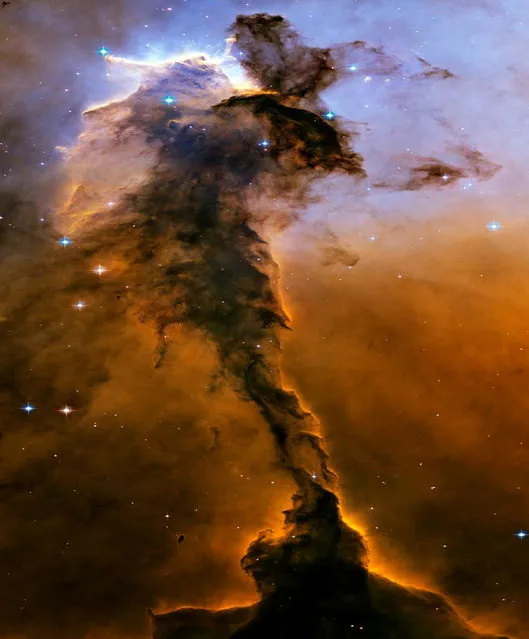
An image of the Eagle Nebula reveals a tall, dense tower of gas being sculpted by ultraviolet light from a group of massive, hot stars. (Photo by Reuters/NASA)
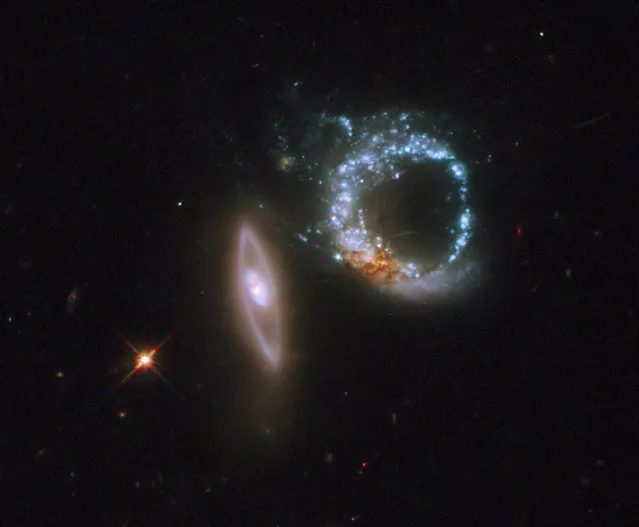
A pair of gravitationally interacting galaxies called Arp 147. The left-most galaxy is relatively undisturbed apart from a smooth ring of starlight. It appears nearly on edge to our line of sight. The right-most galaxy, resembling a “zero”, exhibits a clumpy, blue ring of intense star formation. (Photo by Reuters/NASA)
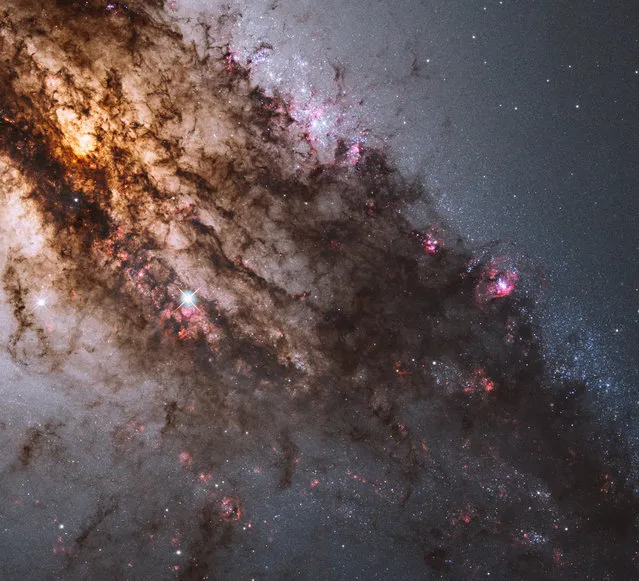
A panchromatic vision, stretching from ultraviolet through near-infrared wavelengths, revealing the vibrant glow of young, blue star clusters and a glimpse into regions normally obscured by dust. (Photo by Reuters/NASA/ESA/Hubble Heritage Team)
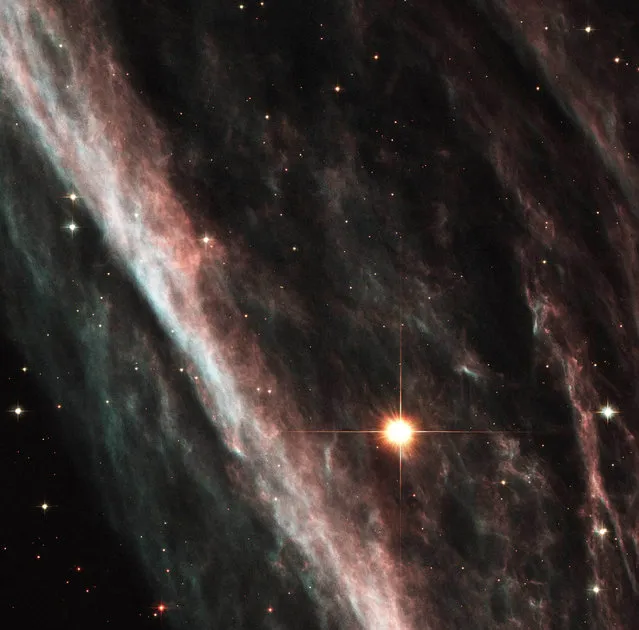
An image of the Pencil Nebula shows remnants from a star that exploded thousands of years ago. (Photo by Reuters/NASA)
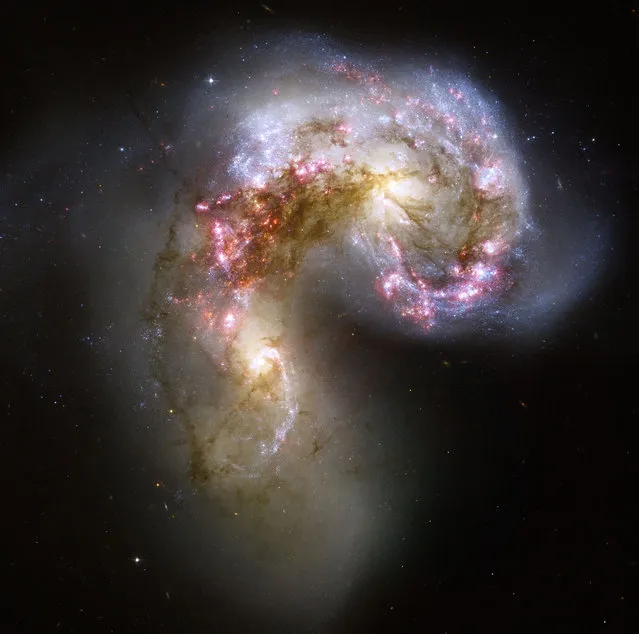
An image of the Antennae galaxies, as the two galaxies smash together, during which time billions of stars are born, mostly in groups and clusters. The brightest and most compact of these are called super star clusters. (Photo by B. Whitmore/Reuters/NASA/European Southern Observatory/Space Telescope Science Institute/Hubble Space Telescope)
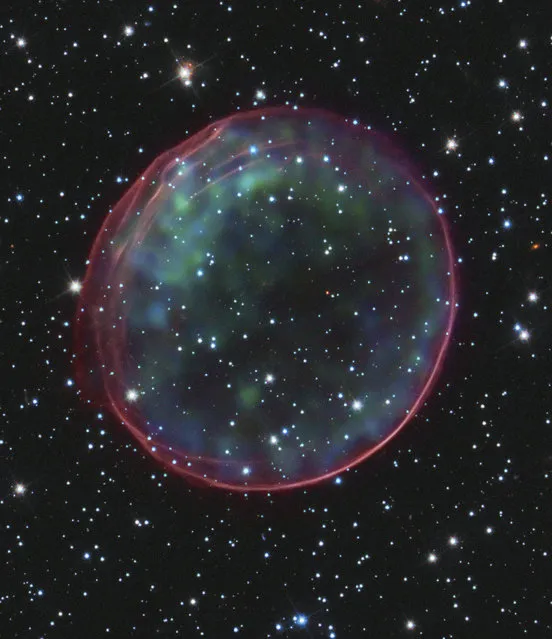
Supernova remnant 0509-67.5, located in the Large Magellanic Cloud, a small galaxy about 170,000 light-years from Earth. (Photo by Reuters/NASA/ESA/CXC/SAO/Hubble Heritage Team)
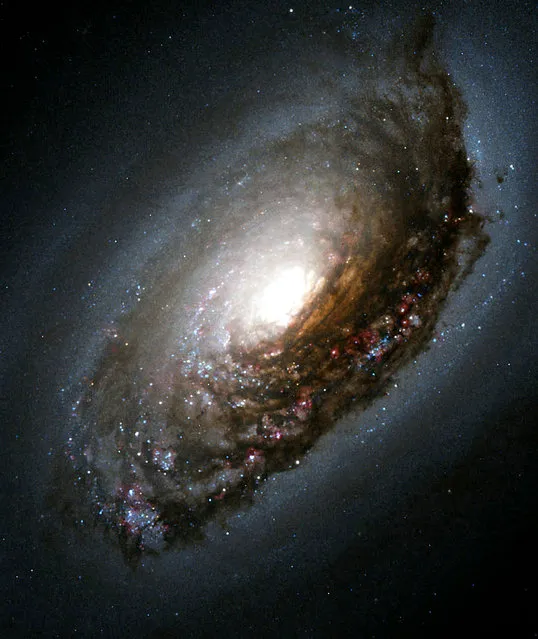
The “Black Eye” galaxy, so named because an ancient cosmic smashup produced a dark ring and a roiling, conflicted interior. What looks like a black eye in the image is actually a dark band of dust that stands out vividly in front of the galaxy's bright nucleus. (Photo by Reuters/NASA/Hubble Heritage Team)
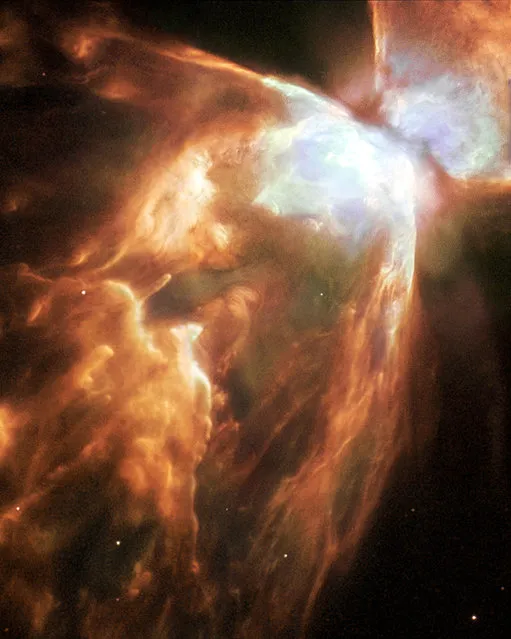
An image of the Bug Nebula shows impressive walls of compressed gas, laced with trailing strands and bubbling outflows. A dark, dusty torus surrounds the inner nebula (seen at the upper right). At the heart of the turmoil is one of the hottest stars known. (Photo by Albert Zijlstra/Reuters/NASA/ESA/Hubble Heritage Team)
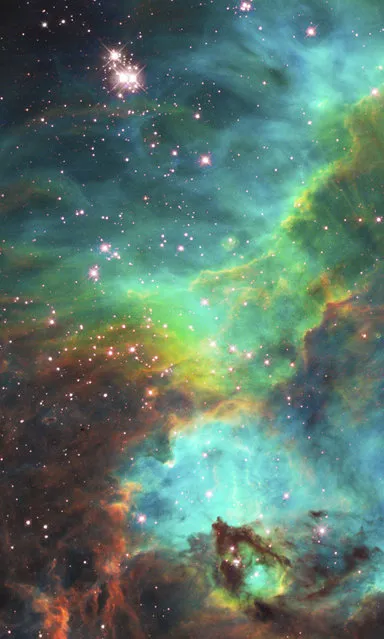
An image of a nebula about 170,000 light-years away. (Photo by Reuters/NASA/ESA/Hubble Heritage Team)
22 Oct 2014 13:34:00,
post received
0 comments
